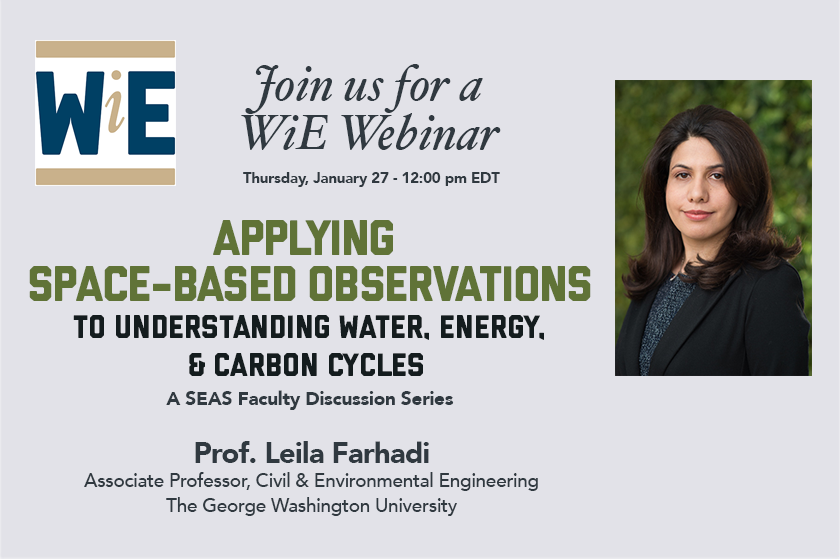WiE Webinar: Understanding the Land’s Water, Energy and Carbon Cycles
Prof. Leila Farhadi on application of space-based observations
NOTE: DUE TO TECHNICAL DIFFICULTIES, THIS WEBINAR IS BEING RESCHEDULED. REGISTERED ATTENDEES WILL BE INFORMED OF DATE/TIME AND CALL-IN DETAILS.
WiE is proud to present Prof. Leila Farhadi in this episode of our SEAS Faculty Discussion Series. Prof. Farhadi, Associate Professor in Civil and Environmental Engineering, provides a fascinating look at applying space-based observations to understand water, energy and carbon cycles.
The exchange of heat and moisture fluxes between the land surface and the atmospheric boundary layer drives the dynamics of terrestrial systems and also weather and climate in the atmospheric system.
Thus, their accurate modeling is of critical importance in a variety of geophysical and ecological applications that involve the land and atmospheric components of the earth system.
Professor Farhadi discusses her interest in modeling land surface and land-atmosphere interaction and exchange processes, through utilizing innovative remote sensing, optimization and numerical modeling techniques.
About Professor Leila Farhadi
Professor Leila Farhadi is interested in understanding and modeling land surface and land-atmosphere interaction and exchange processes by utilizing innovative remote sensing, optimization and numerical modeling techniques. In particular, she is interested in the development of calibration-free techniques for estimating water balance, energy balance and carbon cycle parameters and flux components using remotely sensed data.
Her current projects are “Coupled Estimation of Evapotranspiration and Recharge from Remotely Sensed Land Surface Moisture and Temperature," funded by the National Aeronautics and Space Administration (NASA); “Observation-Driven Mapping of the Linkages between the Terrestrial Water, Energy and Carbon Cycles” funded by the National Science Foundation (NSF); “Hydraulic Parameter Estimation by Remotely-Sensed Top Soil Moisture Observations with the Model Reduced Variational Data Assimilation Methodology," funded by US Geological Survey (DCWRRI-USGS); and “Artificial Neural Networks (ANN) for Global Estimation of Evapotranspiration and Recharge," with funding provided by the George Washington University.

